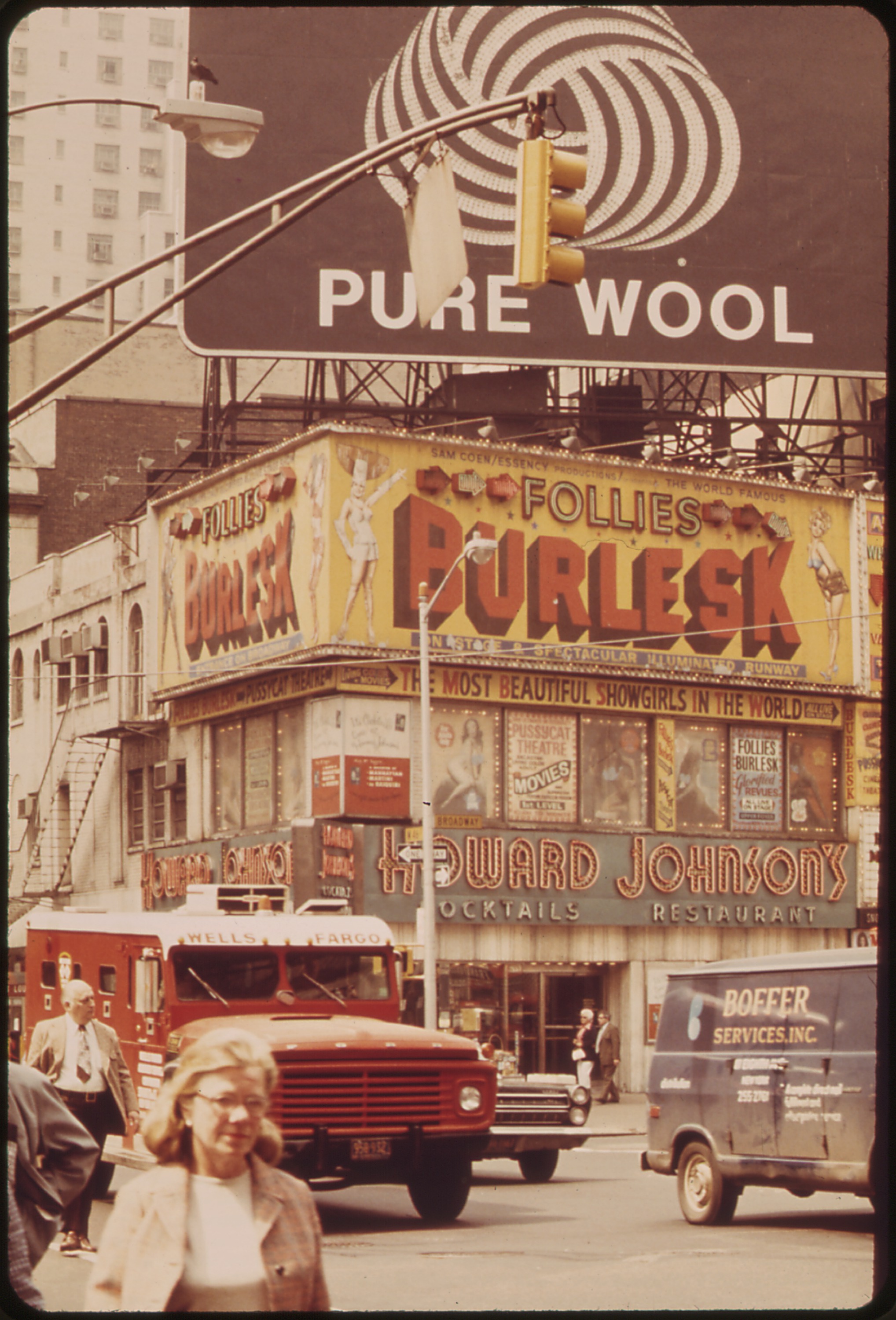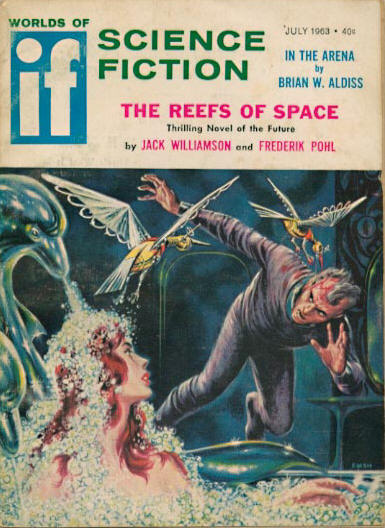|
Franco Grignani
Franco Grignani (February 4, 1908 – 20 February 1999) was an Italian architect, graphic designer and artist. He is best known for black and white graphics, particularly the Woolmark logo, which was voted 'Best Logo of all Time' by Creative Review Magazine in 2011. Grignani was born in Pieve Porto Morone, Italy. He studied architecture in Turin between 1929 and 1933. Early on, he began experimenting with photography, and became interested in optic and visual phenomena. He played a part in Italy's second Futurist and Constructivist movements. Subsequently, his work was more closely associated with Kinetic Art and Op Art. Based on theories of perception, particularly the psychology of form, using his knowledge of architecture, he created more than 14000 experimental works. He remains a powerful influence in the world of graphic design. In Italy, he is considered a master of optical graphic design. Early career During the 1930s he founded Studio Grignani, designing advertising ... [...More Info...] [...Related Items...] OR: [Wikipedia] [Google] [Baidu] |
Woolmark
Woolmark is a wool industry certification mark used on pure wool products that meet quality standards set by The Woolmark Company. It is a trade mark owned by The Woolmark Company, which has since 2007 been a subsidiary of Australian Wool Innovation Limited (AWI). The logo was launched in 1964 by the Woolmark Company under its previous name, the International Wool Secretariat. History The Woolmark logo was developed by the International Wool Secretariat (IWS), which had been founded in 1937. The logo was launched in August 1964 by IWS, then under the control of two Australians, chairman William Archer Gunn, William Archer (Bill) Gunn (1914-2003) and William Vines (1916-2011) as managing director. The two main objectives of the logo were to position wool at the top of the textile market and to ensure that products bearing the Woolmark label were made from pure new wool and not blended with synthetic fibres. The logo had been selected by IWS following a competition in 1963 won by Mi ... [...More Info...] [...Related Items...] OR: [Wikipedia] [Google] [Baidu] |
Victoria And Albert Museum
The Victoria and Albert Museum (abbreviated V&A) in London is the world's largest museum of applied arts, decorative arts and design, housing a permanent collection of over 2.8 million objects. It was founded in 1852 and named after Queen Victoria and Albert, Prince Consort, Prince Albert. The V&A is in the Royal Borough of Kensington and Chelsea, in an area known as "Albertopolis" because of its association with Prince Albert, the Albert Memorial, and the major cultural institutions with which he was associated. These include the Natural History Museum, London, Natural History Museum, the Science Museum (London), Science Museum, the Royal Albert Hall and Imperial College London. The museum is a non-departmental public body sponsored by the Department for Digital, Culture, Media and Sport. As with other national British museums, entrance is free. The V&A covers and 145 galleries. Its collection spans 5,000 years of art, from ancient history to the present day, from the c ... [...More Info...] [...Related Items...] OR: [Wikipedia] [Google] [Baidu] |
Search The Sky
''Search the Sky'' is a satirical science fiction novel by American writers Frederik Pohl and Cyril M. Kornbluth, first published in 1954 by Ballantine Books. Plot summary Halsey's Planet is in decline, and when a generation ship arrives, having failed to contact six other planets, Ross is sent to discover the state of the interstellar colonies. He is given a ship which can make the trip from colony to colony almost instantaneously. The technology used in the ship has been kept secret because it could give rise to interstellar war if one colony decided to conquer others. However, the isolated populations are also affected by genetic drift resulting in a decline in their societies. The first planet he visits has been completely destroyed, the second is a gerontocratic travesty of a democracy, and the third is a repressive matriarchy. On the way he picks up companions Helena and Bernie. The next planet they visit is supposed to be Earth, but it turns out not to be; not only ... [...More Info...] [...Related Items...] OR: [Wikipedia] [Google] [Baidu] |
Conjure Wife
''Conjure Wife'' (1943) is a supernatural horror novel by American writer Fritz Leiber. Its premise is that witchcraft flourishes as an open secret among women. The story is told from the point of view of a small-town college professor who discovers that his wife is a witch. This novel was the first by Fritz Leiber and was first published in the April 1943 edition of ''Unknown (magazine), Unknown''. It is said to have been the inspiration for at least three films: ''Weird Woman'' (1944), ''Night of the Eagle'' (also known as ''Burn, Witch, Burn!'') (1962), and ''Witches' Brew (film), Witches' Brew'' (also known as ''Which Witch is Which?'') (1980). In 2019, the novel was awarded the Hugo Award, "Retro" Hugo Award for Best Novel. Plot Tansy Saylor is the wife of an up-and-coming young sociology professor at a small, conservative American college. She is also a witch. Her husband, Norman, discovers this one day while rummaging through her dressing table: he finds vials of grav ... [...More Info...] [...Related Items...] OR: [Wikipedia] [Google] [Baidu] |
Time Out Of Joint
''Time Out of Joint'' is a science fiction novel by American writer Philip K. Dick, first published in novel form in the United States in 1959. An abridged version was also serialised in the British science fiction magazine '' New Worlds Science Fiction'' in several installments from December 1959 to February 1960. The novel epitomizes many of Dick's themes with its concerns about the nature of reality and ordinary people in ordinary lives having the world unravel around them. The title is a reference to Shakespeare's play ''Hamlet''. The line is uttered by Hamlet after being visited by his father's ghost and learning that his uncle Claudius murdered his father; in short, a shocking supernatural event that fundamentally alters the way Hamlet perceives the state and the universe ("The time is out of joint; O cursed spite!/That ever I was born to set it right!" .V.211-2, much as do several events in the novel. Plot summary Ragle Gumm lives in the year 1959 in a quiet America ... [...More Info...] [...Related Items...] OR: [Wikipedia] [Google] [Baidu] |
The Squares Of The City
''The Squares of the City'' is a science fiction novel by British writer John Brunner, first published in 1965 (). It was nominated for the Hugo Award for Best Novel in 1966. It is a sociological story of urban class warfare and political intrigue, taking place in the fictional South American capital city of Vados. It explores the idea of subliminal messages as political tools, and it is notable for having the structure of a famous 1892 chess game between Wilhelm Steinitz and Mikhail Chigorin. The structure is not coincidental, and plays an important part in the story. Reception Algis Budrys found the novel to be more artifice than fiction, saying "this is a confusing, overpopulated, almost-unidentifiable-with story set in a city which seems to have been created for the sole purpose of having Brunner set a 'human chess game' in motion upon it. . . . There is nothing in particular here to catch and hold the reader's involvement". Judith Merril, however, found ''Squares'' "an ... [...More Info...] [...Related Items...] OR: [Wikipedia] [Google] [Baidu] |
Bill, The Galactic Hero
''Bill, the Galactic Hero'' is a satirical science fiction novel by American writer Harry Harrison, first published in 1965. A novella length version appeared in the magazine '' Galaxy Science Fiction'' in 1964 under the name "The Starsloggers". Harrison reports having been approached by a Vietnam veteran who described Bill as "the only book that's true about the military". Terry Pratchett once said: "I don't think ''The Hitchhiker's Guide to the Galaxy'' was the funniest Science Fiction novel ever written. The funniest Science Fiction novel ever written was ''Bill, The Galactic Hero''". Plot summary Bill is a farmboy on a small backward agricultural planet who is drugged, hypnotised, then shanghaied into the Space Troopers and sent to recruit training under a fanged instructor named Deathwish Drang. After surviving boot camp, he is transferred to active duty as a fuse tender on the flagship of the space fleet in battle with the Chingers, a small reptilian race who are, in Troo ... [...More Info...] [...Related Items...] OR: [Wikipedia] [Google] [Baidu] |
The Reefs Of Space
''The Reefs of Space'' is a dystopian science fiction novel by American writers Frederik Pohl and Jack Williamson, published in 1964. It is part of the Starchild Trilogy, the other books in the series being '' Starchild'' (1965) and '' Rogue Star'' (1969). Plot The novel is set in a dystopian future where mankind is ruled by a brutal totalitarian government known as the ''Plan of Man'', enforced by a computerized surveillance state Mass surveillance is the intricate surveillance of an entire or a substantial fraction of a population in order to monitor that group of citizens. The surveillance is often carried out by local and federal governments or governmental organizatio .... The main character is a genius scientist, Steve Ryeland, who is trying to build a new type of rocket drive. While Ryeland is struggling with amnesia, he has a computer companion named Oporto. Due to Ryeland's anti-government actions in the past, the Plan of Man Computer deems him to be a security risk, s ... [...More Info...] [...Related Items...] OR: [Wikipedia] [Google] [Baidu] |
Davy (novel)
''Davy ''is a post-apocalyptic science fiction novel by American writer Edgar Pangborn, nominated for the 1965 Hugo Award. It is set in the Northeastern United States some centuries after an atomic war ended high-technology civilization, with some scenes on an unnamed Atlantic island. The novel is a bildungsroman, following its title character, Davy (who grew up a ward of the state and thus has no last name) as he grows to manhood in a pseudo-medieval society dominated by a Church that actively suppresses technology, banning "anything that may contain atoms." Davy begins as an indentured servant in an inn, but escapes, and most of the novel is concerned with his adventures. The book is written as though Davy himself were writing his memoirs, with footnotes by people who knew him. Eventually he becomes involved with a group of liberal, freethinking people forming around a reforming young ruler (a hereditary "President") who tries to defy the dominant "Holy Murkan Church" - t ... [...More Info...] [...Related Items...] OR: [Wikipedia] [Google] [Baidu] |
The Wanderer (Leiber Novel)
''The Wanderer'' is a science fiction novel by American writer Fritz Leiber, published as a paperback original by Ballantine Books in 1964. It won the 1965 Hugo Award for Best Novel. Following its initial paperback edition, ''The Wanderer'' was reissued in hardcover by Walker & Co. in 1969, by Gregg Press in 1980, and by the Easton Press in 1991, as well as a Science Fiction Book Club edition in 1987. It was released in hardcover in the UK by Dennis Dobson in 1967, with a paperback edition following from Penguin Books in 1969. Translations have appeared in Dutch, French, German, Hungarian and Italian. ''The Wanderer'' was the first novel to win the Hugo Award without previously being published in hardcover or appearing in some form in a genre magazine. The novel deals with a wandering planet that enters the Solar System. Its narrative follows multiple disconnected groups of characters to portray the widespread impact of the Wanderer on the entire population of the Earth (and ... [...More Info...] [...Related Items...] OR: [Wikipedia] [Google] [Baidu] |
Penguin Books
Penguin Books Limited is a Germany, German-owned English publishing, publishing house. It was co-founded in 1935 by Allen Lane with his brothers Richard and John, as a line of the publishers the Bodley Head, only becoming a separate company the following year."About Penguin – company history" , Penguin Books. Penguin revolutionised publishing in the 1930s through its inexpensive paperbacks, sold through Woolworths (United Kingdom), Woolworths and other stores for Sixpence (British coin), sixpence, bringing high-quality fiction and non-fiction to the mass market. Its success showed that large audiences existed for several books. It also affected modern British popular culture significantly through its books concerning politics, the arts, and science. Penguin Books is now an imprint (trad ... [...More Info...] [...Related Items...] OR: [Wikipedia] [Google] [Baidu] |




